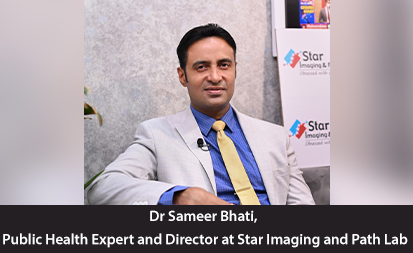Spreading of Viruses in India
At a time when the medical authorities of the country are already burdened with the outspread of coronavirus, the rise in other diseases and virus is bringing the healthcare system to an unprecedented situation of tribulation. The last week of August witnessed more than 50 deaths due to fever related illness in Uttar Pradesh where the majority of affected population were children. None of the dead tested positive for Covid-19. Many of them complained of joint pains, headaches, dehydration and nausea. In some cases, they reported rashes spreading across legs and arms. While in the southern counterpart Kerala, a 12-year-old boy died of the infection in Kozhikode district, and 11 more people have shown Nipah symptoms. Later around 50 more people were isolated in cases related to Nipah Virus. Kerala is already caught in a tough battle against COVID-19, with the state still accounting for almost half of all new infections in the country. In this scenario, the outbreak of one more deadly viral infection has everyone worried. In west of India, majorly in Gujarat, there has been a surge of 110% in cases of Malaria and Chikungunya with Dengue from January to September this year only. The spike in these infections has reportedly led to shortage of beds in hospitals in parts of the state. According to WHO, The global incidence of dengue has grown dramatically in recent decades. About half of the world's population is

At a time when the medical authorities of the country are already burdened with the outspread of coronavirus, the rise in other diseases and virus is bringing the healthcare system to an unprecedented situation of tribulation.
The last week of August witnessed more than 50 deaths due to fever related illness in Uttar Pradesh where the majority of affected population were children. None of the dead tested positive for Covid-19. Many of them complained of joint pains, headaches, dehydration and nausea. In some cases, they reported rashes spreading across legs and arms. While in the southern counterpart Kerala, a 12-year-old boy died of the infection in Kozhikode district, and 11 more people have shown Nipah symptoms. Later around 50 more people were isolated in cases related to Nipah Virus. Kerala is already caught in a tough battle against COVID-19, with the state still accounting for almost half of all new infections in the country. In this scenario, the outbreak of one more deadly viral infection has everyone worried.
In west of India, majorly in Gujarat, there has been a surge of 110% in cases of Malaria and Chikungunya with Dengue from January to September this year only. The spike in these infections has reportedly led to shortage of beds in hospitals in parts of the state. According to WHO, The global incidence of dengue has grown dramatically in recent decades. About half of the world’s population is now at risk. There are an estimated 100-400 million infections each year.
Earlier Kerala and Maharashtra reported cases of Zika Virus which later put a scare on Karnataka too.
This has been the case of most states of India where a new illness has made the lives more troubled than before. Majority of diseases prevailing in India are vector borne diseases, or in lay man’s terms the diseases that are being caused via mosquito, flea or tick that spread pathogens. Most of them do not have a direct cure, however, with a combination of medications the condition of the patient can be stabilized.
In these types of infections, the better option is always the “precaution-before-cure”. Almost every state government drive an awareness programme for this where the citizens are advised to keep the fresh water stored with responsibility and not let it get stuck anywhere. Post monsoon season only the highest surge is observed in cases of these illnesses. With better care at times of monsoon, this long lying problem can be put to an end immediately. Few governments too are trying the option for breeding the special species of fishes in ponds and lakes who eats mosquito larvae and prevent it from growing further.
The number of prevailing infections in the country also pushes the patient to an end of confusion and unsurity as to which virus or disease should he get tested once he catches fever. The role of physicians also comes to play where they can recognise the symptoms and write the required tests only, not putting a large pressure on path labs and testing centers.
Dr. Sameer Bhati, Public Health Expert and Director at Star Imaging and Path Lab said “Many vector borne illnesses depend upon weather conditions and hygiene practices to a very large extent. They can be easily prevented, if, post monsoon, people start taking care of their surroundings and follow the necessary guidelines to combat them. Moreover, diseases like Dengue and Malaria have been prevalent in India for some good time now, while the fear of these diseases have been reduced with time and people have started neglecting to take the precautions. It is always advisable to take these diseases seriously where acting late could worsen the situation already. It is of great importance in present scenario to be able to differentiate a fever of Covid-19, season flu, dengue, or any other illness or virus. If one catches fever or any other basic symptom post monsoon season they should get tested for these illnesses after consultation with doctor. Thus, a little preventive and careful approach from people could make the whole issue simpler”.






